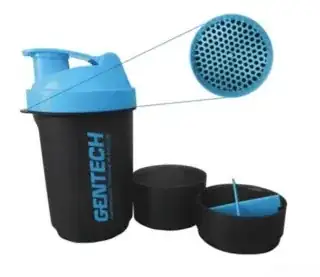I like to drink protein shakes, but I find that it's very hard to dissolve the protein powder into water or milk. You get clumps, and unless you want to get your blender dirty or spend ten minutes whisking you're out of luck. Recently I've started experimenting, and I've made some discoveries that could solve this problem.
First off, my protein powder dissolves in oil. I can dissolve it in oil then add water, and then instead of clumps I'll just have two separate layers, one with protein powder dissolved in oil and the other water. This is still better than clumps and tastes super creamy, but obviously this is much more calorie dense and kinda defeats the purpose of drinking protein shakes.
My next experiment was to try adding as little oil as possible. I added just enough oil to the protein powder to get the texture of wet sand, then added my water and stirred. This seemed to create an emulsification although there were some small clumps, but I think with some refinement I could get clump free emulsions using this technique. My theory is that when I added the water it mixed slowly with the oil and protein since the oil protein mixture was still in mostly solid form, and this allowed an emulsion to form while it could not in the previous case. But that's just a guess. Just like with the previous method, this was delicious but unhealthy.
So, is there something else I could try dissolving my protein powder in, or something I could dilute my oil with so it will still dissolve the powder but be less calorie dense? I'm using some sort of vegan protein powder with added emulsifiers. I can tell you what kind of protein it is later if it helps, but I suspect I'd get similar results with whey protein.

